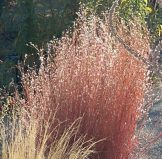
Praying Mantis Egg Case
It’s the time of year when we’re itching to begin planting for the season and preparing for this year’s growth. But hold onto those shears! We know that regeneration is occurring in our soil, with microbes and overwintering insects. Delaying Spring cleanup for another few weeks will ensure a healthy, vibrant ecosystem that best supports your plants. Here are tips for you to best help this process take place, while still having an aesthetically pleasing garden.
First take a long look at your gardens and review any notes from last season on successes, disappointments, gaps, and changes that you’d like to make. Assess the ecosystem you have created and think about how you can make it even more supportive of our precious wildlife, beneficial insects, pollinators, and soil life. This is a great time to consider perennials to be moved, removed, and desired replacements.
A certain amount of garden clean-up is very important for reducing diseases and pests that are difficult to control. If you haven’t already done so, do remove diseased plant material from your vegetable garden. You should have been removing diseased foliage and using organic controls for fungal diseases like mildew, blackspot, or rust during the past growing season, but if their disease-carrying foliage is still in your beds now, pick up and dispose of them responsibly.

Phlomis russelliana (Jerusalem Sage) in snow
But don’t be too quick to scalp those perennials and annuals! Many provide natural food and shelter sources that wildlife and beneficial insects depend on for winter and spring survival. You may not have noticed, but so many beneficial insects and butterfly larvae spend the winter in the (often hollow) dead stems. If you throw them out, you’ll lose most of the beneficials that would otherwise keep the balance this year. Always keep an eye out for egg cases attached to stalks when you prune or clean up. There’s often an aesthetic side-benefit – many seed-heads look fabulous either crowned with snow or silhouetted against the snow-covered ground – even if you’re ready for winter to end!
You may also have some southwestern plants in your garden that prefer not to be cut back until April because they may still be green inside the stems and are forming valuable growth nodes. These include Agastache, some Salvia, and a scattering of others like Scutellaria suffrutescens (Cherry Skullcap).

Little Bluestem in late autumn light
Unless you have an ‘ornamental’ grass that self-sows aggressively, we hope you’ve been enjoying the texture and form of grasses in your winter landscape. If you have any ‘cool-season’ grasses, you’ll want to check them for signs of new green growth at the base, and cut them now to 3” above the ground so they can begin making unimpeded new growth. Dormant ‘warm-season’ grasses can remain attractive until warmer weather comes and don’t need to be cut down until April.
Leaving dry stalks standing in the winter helps preserve soil structure. Snow collects between the stalks and provides protection from freezing temperatures by insulation for the crowns of the plants, especially important for marginally hardy plants. Captured snow keeps soil temperature more consistent, protecting from extreme temperature fluctuations, and helps prevent the alternate freezing and thawing that can disrupt mycorrhizal networks (and uproot plants, especially new and small ones). As we’re still experiencing freezing temperatures after warm spring-like days, this is an ongoing benefit.

Overwintered Leaves
Leave the leaves! The larvae of many butterflies overwinter in the blanket of autumn leaves, as well as other beneficials. The leaves also provide cover for frogs, toads, and spiders. Songbirds eat more than just seeds; they search in the leaf litter for insect eggs and caterpillars. As leaves naturally break down over time, they feed the soil microbes that make nutrients available to plants. And very large, flat leaves from trees like Catalpa, Basswood (Tilia americana), Norway Maple, Sycamore/London Planetree) should be cleared from beds if you didn’t last fall, or they can form a slick solid mat that smothers the crowns of smaller plants.
WINTER WATERING
Through the winter and spring, pay attention to the amount of precipitation your garden receives. In most areas, we’ve received abundant moisture this winter. But new plantings, fruit trees, evergreens, and roses are especially vulnerable, and are more likely to suffer or die from dehydration than from cold. Check regularly and water every few weeks as necessary.

Mahonia repens winter color
Evergreens continue to transpire (give off water) during the winter because they have leaves or needles. If these plants cannot take up water, they will dehydrate and suffer, not showing injury until it’s too late. And roses, with their green-skinned canes, are far more likely to perish in winter from dehydration than from cold temperatures.
If the temperature is above 40 degrees Fahrenheit, give your garden a thorough watering when there’s been less than 2″ of natural precipitation in the previous 4 weeks. Water in late morning or early afternoon so that the water has time to sink in before it freezes. TIP: Use the auto populate feature on your electronic calendar to prompt you to winter-water!
